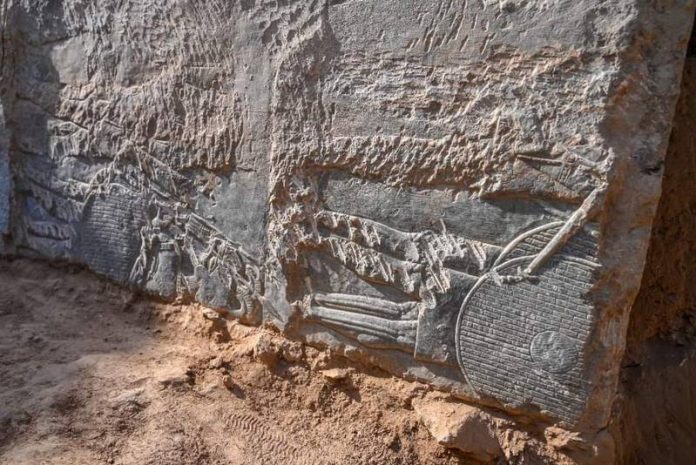An excavation team comprising Iraqi and American archaeologists and experts discovered a monumental rock-carving relief in the northern city of Mosul. The carvings, dug out in one of the major archaeological sites, Mashki Gate, which was considered one of the monumental gates for the old city of Nineveh, the imperial capital of the Assyrian Empire, dated back to 681 BC.
Iraqi State Board of Antiquities and Heritage director Dr Laith Majid Hussein said on Monday that the reliefs are believed to have been carved during the reign of the Assyrian King Sinharib from 705 to 681 BC. The Assyrian civilization arose about 4,500 years ago and extended from the Mediterranean to Iran.
Ali Shalgham, the head of the team confirmed that the eight marble relics depict war scenes, as well as palm, grape, pomegranate and fig trees. The Mashki Gate is one of several set up at the nearly 12km stone and mud brick wall of the archaeological site of Nineveh in the heart of Mosul.
Believed to have been used to lead livestock to nearby Tigris River or to bring water to the city, the “water carriers’ gate” was bulldozed along with the other gates during the city’s occupation by ISIS in 2016. The USD 1.1 million worth Mashki Gate restoration project started in 2021 and is scheduled to end in 2023. It is being led by the University of Pennsylvania and conducted with the help of Aliph Foundation, an international alliance for the protection of heritage in conflict areas. The gate, discovered in 1968 by Iraqi archaeologists, leads to a big hall through a corridor.
Thousands of the Assyrian civilization’s artefacts are displayed in the Iraqi National Museums as well as across the world, while some are for sale at auction houses.

















